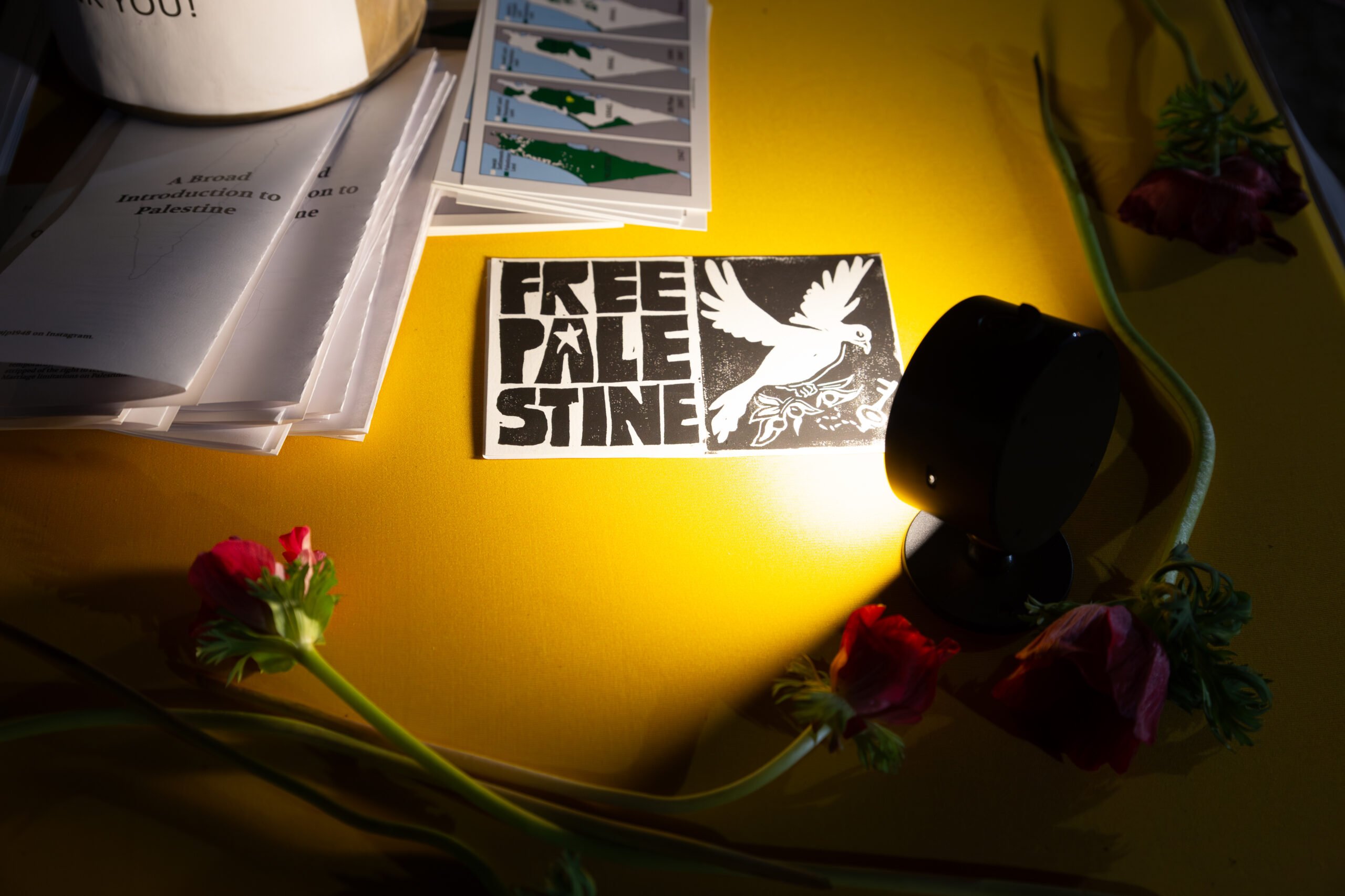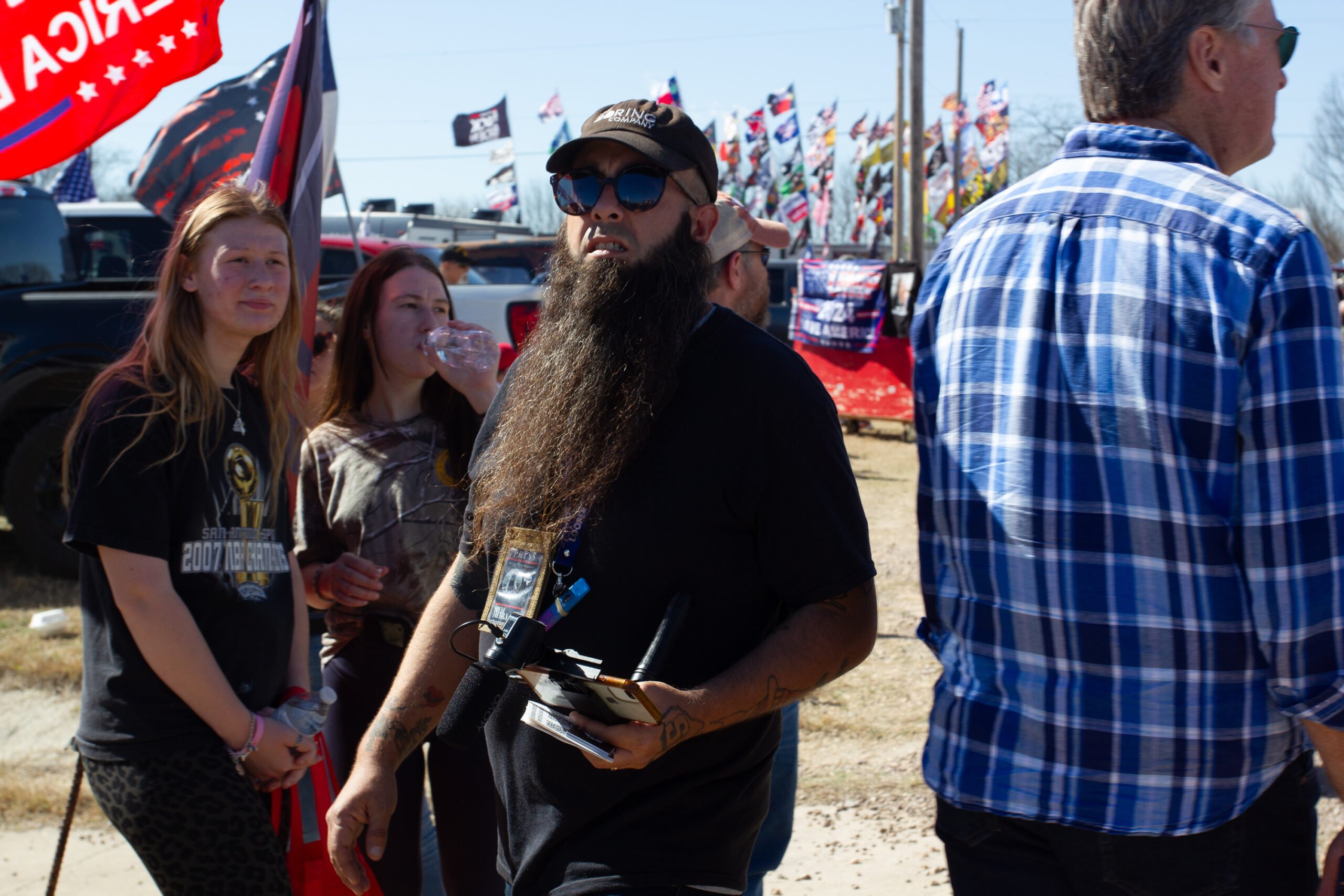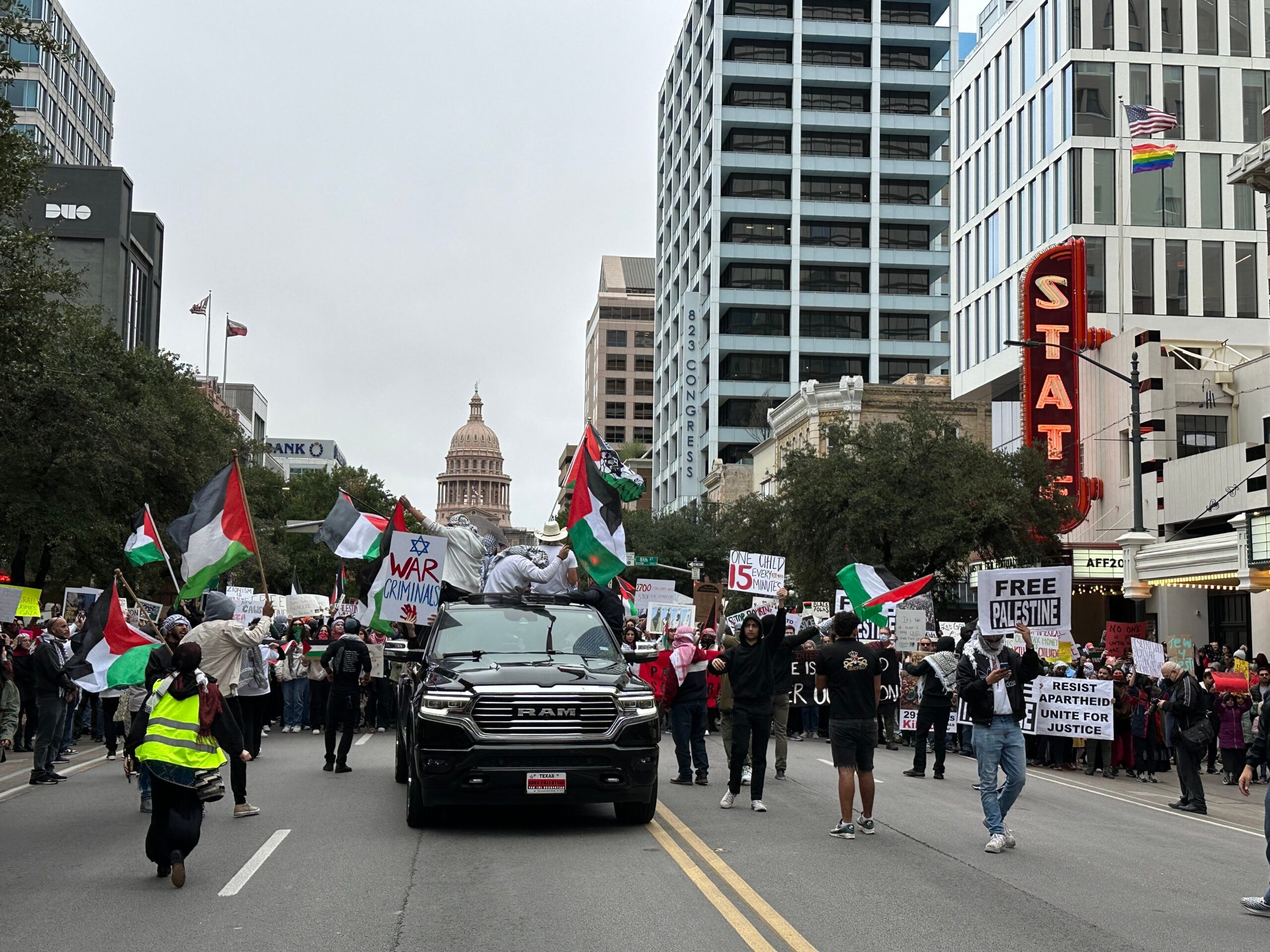Close to the Bone
San Antonio
I live in a city of stories. Exploding, mystical, straining-at-the-leash, Lorca-esque rhapsodies made of green, ripening pomegranates and the worship of crepe myrtles, belovedness and its violation, scores of abandoned dogs, and the gangster opera of red-shirted redemption. I live in El Hueso, the true capital of San Antonio, the most soulful city in Texas, a mile west of the pinche Alamo. El Hueso, pronounced Wes-Oh, is the unofficial Westside, the oldest barrio in San Antonio with officially designated borders. Unofficially, El Hueso’s borders depend on who’s remembering, because there are no maps for this place of memory, culture and Catholic-taught respeto, where ancestors are sometimes buried in backyards alongside half a dozen pets. Hueso means bone in Spanish, the mero-mero beginnings, the truth, origin, the blood-wire that holds up all the other stories like a neighbor’s just-washed Fruit of the Loom chones. I think I’ve been looking for this place all my life.
To get to El Hueso, leave the Alamo, head west over the Commerce Street Bridge, and pass the county jail. You’ll know you’re here when you start getting a little nervous about the bail bond signs, the metal recycling, the places where they make ornamental steel bars in rainbow colors, the men with aboriginal tattoos on their faces, and the omnipresent railroad tracks. You’ll know you’ve arrived when the bungalows are also churches with hand-painted signs declaiming Jesus and La Luz poetics. Here, the tire-repair shops blaze with the red coral of hibiscus that grows everywhere, and with murals and graffiti displayed on walls along with ads for motor oil. Whiffs of tamales drift down the block, tired and gordita prostitutes saunter by, the two-legged and four-legged perros chasing them. The latter wait patiently, tails wagging, at the bus stop—good luck talismans with fleas and mange.
According to the Guadalupe Westside Community Plan, sponsored by the city of San Antonio and published in May 2007, the official, historic Westside borders were chartered in 1837. You enter after crossing the Guadalupe Street Bridge. In 1881, Southern Pacific Railroad completed the San Antonio–El Paso route, following ancient trails and bringing back more people carrying the shreds of the past. The people of the missions, and the blacks who came with or before the Anglo settlers. Carne y hueso. Flesh and bone. Separately, and mixed. Guadalupe Street is part of the famous Old Pecos Trail, also known as Comanche Trail, used by Native Americans, Spaniards, soldiers, merchants and the railroads to navigate the rattlesnake terrain of Texas.
Then came a flood and a revolution. In 1921, la inundación destroyed much of downtown, and many more families relocated to El Hueso, followed by people fleeing the Mexican Revolution, in which 10 percent of the population of Mexico perished. People say Guadalupe Street was surely like Paris, sharing her joie de vida of music, art and urban life. Maybe that’s why there is a street called Amor here. Guadalupe Street, the corazón, the commercial heart of the Westside, encompassed two theaters, gas stations, icehouses, a plaza, an elegant dance salon, family corner stores we call tienditas, and the glorious las carpas, Mexican tent shows. Imagine revivalist fever with no praying—only drinking, laughing, singing, family. It was a city-within-a-city that was the truest, authentic San Antonio. There is something—a jonoseqúe beating underneath the rundown streets—that seems like poverty and graffiti only to anyone who can’t or won’t see more than the skin.
San Antonio and its Westside are the Mecca for Mexican-Chicano-Tejano-Mexican-American Latinos throughout Texas. From Radio Jalapeño to Flaco Jimenez, to voting-rights pioneer Willie Velasquez, to Vicki Carr, to the dozens of murals, to the Guadalupe Cultural Arts Center, to the origins of MALDEF and the Edgewood ISD’s lawsuit challenging the public financing of schools, San Antonio is the cultural and political epicenter of Latino life—and El Hueso is the mother lode. Entiendes, mendes?
No more late-night carpas, but la música weaves through El Hueso around my streets—Morales, Ruiz, Sabinas, Colorado, Monclova—like the syncopated rumbling of skateboarders in the evening. The accordion, a favorite and conjunto music fundamental, spices the air with a new kind of wind. At night I swear the clouds are feathered and fluffed by the chords that drift from open windows and porches and ascend through old oaks, huisache and pecan trees to the sky.
My neighbor Batman apologizes for all the late-night music. He’s not the only one. I tell him he’s got competition from his son’s old-school rap. Firecrackery cumbias are popping down the block, while the oldies-but-goodies, made right here, we call the Westside sound float through the air. You remember those summers dancing barefoot in the street until midnight? Here it’s Garibay, Flaco, Motown, Joe Jama, Eminem, Kenny Rogers.
Batman’s not his real name, just his favorite television show. He tells me about the snake that was getting bigger and bigger in my yard. It was the time before my house’s renovation, when nobody lived in my shotgun house except the snakes in the waist-high grass, and for a time 11 Mexicanos. He stabbed the 6-footer with a knife and a little help from Bud Light. Chopped the snake’s head off but its body kept going, threading its way through the hurricane fence we’re talking over, la head going in another direction. Just to show what it’s made of, he says.
Viste the woman who goes by on the bike at night? She was taken by a million martians, Batman says. Por eso no ’sta pretty no more. Swears her body got taken by them, exchanged for the fat one she’s got now, believe me, era some’n before. A long time ago, Batman dated her. Promises to tell me the rest of the story next time. He rides his bicycle to the Alamodome several times a week. He’s on the assembly and clean-up crew after games and concerts. Sometimes he works 12-hour days. He was a single father, and one son has a good job at the Toyota plant, and the younger one, I’ll call him Mario, dropped out of high school and lives with Batman and his own 2-year old, Robin—a Batman fanatic, too. I suspect Mario has trouble reading because he rubs his eyes a lot, asks me to read the dog chow package for his pitbull puppy. He makes confessions about his past when he drinks, says he’s despised for being who he is and has almost given up.
A neighbor I miss a lot is Rachel, who killed herself last year on Mother’s Day. I think her husband did it, though she’s the one who drank and drugged herself. Rachel was bipolar and walked around in a medicated daze sizzled by cheap wine. She told me her story in bits and pieces, like being forced to dance for her father’s friends when she was 7. Rachel loved listening to the Westside music in the afternoons before her refrigerator-sized husband got home, liked to sit outside on her secondhand swing set with her three boys and all the cats purring, Esteban Jordan’s jazzified polkas cooking just right. How come I didn’t hear the punching before she told me? Wish she hadn’t taken so long to confess how he flattened her bird bones by sitting on her. On New Year’s Day, the policeman I talked her into calling guessed at first that her jaw was crooked ‘cause that King Kong broke it and wouldn’t take her to the doctor, just like he broke her nose.
Nobody talks about Rachel.
When that King Kong husband came to tell me his side of the story, I saw the fear in his face. He knows I know who did it. Said the doctors told him they’d never seen anyone who wanted to die so much. Calls his sons you dummies all the time, and they’re struggling in school. Want to be soldiers when they grow up.
If I could give Rachel a color from El Hueso, she’s a tea rose like the ones that grow in the oldest yards with bursting-red perfume. El Hueso is undying flowers, Easter blues and fading lavenders, lemon-yellows, soft morning-glory white. It’s like Mexico here, but not quite because the purple-orange and turquoise-red combinations they like over there are expensive for us. Easier to drench a little house in one look-at-me color. Something on sale that will last a good long time. People are tired from long days of construction work and nights of cleaning hospitals. White paint is the cheapest, and it’s clean, proper, like the brick façades that now cover some of the renovated houses.
Lots of people don’t have cars, so they walk—no, they stroll. To the neighborhood schools, to St. Agnes, to the Mount Olive Baptist Church, the dollar store, to get barbacoa on Sundays at Garza’s on Ruiz, to Cozy Corner for a beer and maybe get lucky. Batman takes his grandchildren to Farias Park, a one-block neighborhood park with a covered basketball court where you can get a glimpse of the HemisFair lights. The other night on Commerce, I saw a been-there woman sucking on a viejito maybe in his 70s, right there at the bus stop. Working hard.
One afternoon, Batman tells me the latest across our fence. Seems that the elderly woman across the street came running to his house in the morning all panicked, dressed only in her negligee! Ayúdame! Por Favor! Her husband was dying, call 9-1-1! Batman found the 80-year-old man—naked, splayed out on the recliner, on the verge of leaving this world the way most men dream. Batman called the ambulance, and surprise, he made it! You think he was taking Viagra? Batman wonders. The men up and down the street are already laughing, asking Batman for juicy details. All smirking and punching each other, This is the way to go. The viejita gave Batman a $10 bill so he wouldn’t talk, that’s why, I tell him. But the story was just too good, he says.
At night, the old oak next door looms over my shotgun’s roof like an old spirit, so all I can see are the branches above my house. The other oak in the front is the favorite of Baby Kitty, our spoiled tabby, and the tree’s girth is splitting the fence so it’s now the corner fence where Donkey, the chained mixed-pit, stands his hundred pounds and tries to press the fence down for one more hug. On the other side, Batman and his son tell me about La Llorona, the legendary weeping woman since the time of La Conquista or Medea, depending, while the 4-year-old Robin cries to hold Baby Kitty. Have you seen her? Who? Baby Kitty? No, La Llorona, she’s in the backyard.
Alazán Creek, a sunflower-covered branch of the murky San Antonio River (the other one is Apache Creek), winds through El Hueso and behind my house. It divides streets in the process, and there are old-fashioned footbridges to get you across. La Llorona, the ghost-woman dressed in white, San Antonio’s betrayed woman who drowned her children at the river rather than have them taken from her, is also a Lady Death woman, a mother with hungry arms for her lost children, a wise-protecting woman, or sometimes, a witch.
My neighbors say they understand why a woman would kill her children rather than let them go with their abusive father. Batman says no, not all fathers are bad. Mario says he’s run into La Llorona when he drinks too much. You think the story is true? Bad things happen here. Batman’s brother is in prison. Mario got beaten up by the police some time ago for something he didn’t do; his crime was wearing a red T-shirt. He dreams of working at a warehouse, only he needs a driver’s license. Batman got a lawyer for Mario.
It’s midnight on a Saturday night, and El Hueso is quiet as I step out on my porch and look at the richest blue song of sky, wonder if some of those twinkles are from downtown. No one’s sitting on the kitchen chairs tonight. Tomorrow’s the Fourth of July, and there’s gonna be picnics and camping with the family. I can hear the quiet through the call and response of the woof-woofs, the chispita of bird wings settling in their nests, the fence-prancing of cats. Silence is an intermission in El Hueso. When it happens, you can really hear it. I guess this is why people leave this place, but it’s in our bones.
See photos taken by children who live on the Westside.
Bárbara Renaud González lives in San Antonio and is the author of the novel Golondrina, why did you leave me?


